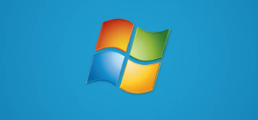
The history of Microsoft Windows as a desktop operating system spans several decades, beginning in the mid-1980s. Below is an overview of its development:
Windows 1.x and 2.x (1985–1990)
- Windows 1.0 (1985):
- Microsoft’s first graphical user interface (GUI) for PCs.
- Operated as a layer on top of MS-DOS.
- Featured tiled windows and basic programs like Calculator and Paint.
- Windows 2.0 (1987):
- Introduced overlapping windows and desktop icons.
- Supported expanded memory and better integration with applications like Microsoft Word and Excel.
Windows 3.x (1990–1994)
- Windows 3.0 (1990):
- The first version to gain mainstream success.
- Enhanced graphics and multitasking capabilities.
- Included the Program Manager, File Manager, and Solitaire.
- Windows 3.1 (1992):
- Added TrueType fonts, multimedia support, and drag-and-drop functionality.
- Widely used in business environments.
Windows 95 (1995)
- A revolutionary update that introduced the Start menu, Taskbar, and Windows Explorer.
- Integrated MS-DOS and 32-bit support, making it more powerful for modern applications.
- Enabled plug-and-play hardware compatibility.
Windows 98 (1998) and Windows Me (2000)
- Windows 98:
- Enhanced web integration with Internet Explorer.
- Introduced the Quick Launch toolbar and USB device support.
- Windows Me (Millennium Edition):
- Focused on home users with multimedia and system recovery tools but suffered from stability issues.
Windows NT and Windows 2000
- Windows NT (1993–1996):
- Built as a robust, enterprise-grade OS.
- Used for servers and professional workstations.
- Windows 2000 (2000):
- Combined NT technology with a user-friendly GUI.
- Became the basis for future Windows versions.
Windows XP (2001)
- Combined the home-oriented Windows 9x line with the NT kernel for stability.
- Introduced a colorful, user-friendly interface.
- Widely praised for reliability and support for a vast array of hardware.
Windows Vista (2006)
- Significant visual overhaul with the Aero interface and improved security features.
- Criticized for high system requirements and compatibility issues.
Windows 7 (2009)
- Built on the strengths of Windows Vista while improving performance and usability.
- Became one of the most popular Windows versions ever.
Windows 8 and 8.1 (2012–2013)
- Focused on a touch-first interface with the Start Screen and tile-based design.
- Introduced new apps but faced criticism for removing the Start menu.
- Windows 8.1: Reintroduced the Start button and refined usability.
Windows 10 (2015)
- Returned the Start menu in a hybrid format blending desktop and tablet features.
- Offered free upgrades to Windows 7 and 8 users.
- Regular updates introduced features like Cortana, Windows Hello, and the Microsoft Store.
Windows 11 (2021)
- Focused on a modernized design with rounded corners and a centered Start menu.
- Improved performance and multitasking with Snap Layouts and virtual desktops.
- Increased hardware requirements to ensure compatibility with newer technologies.
Impact on Computing
- Windows has dominated the desktop market for decades, influencing both home and enterprise computing.
- Its adaptability to different hardware configurations and user needs has solidified its position as a cornerstone of modern computing.
Comments are closed